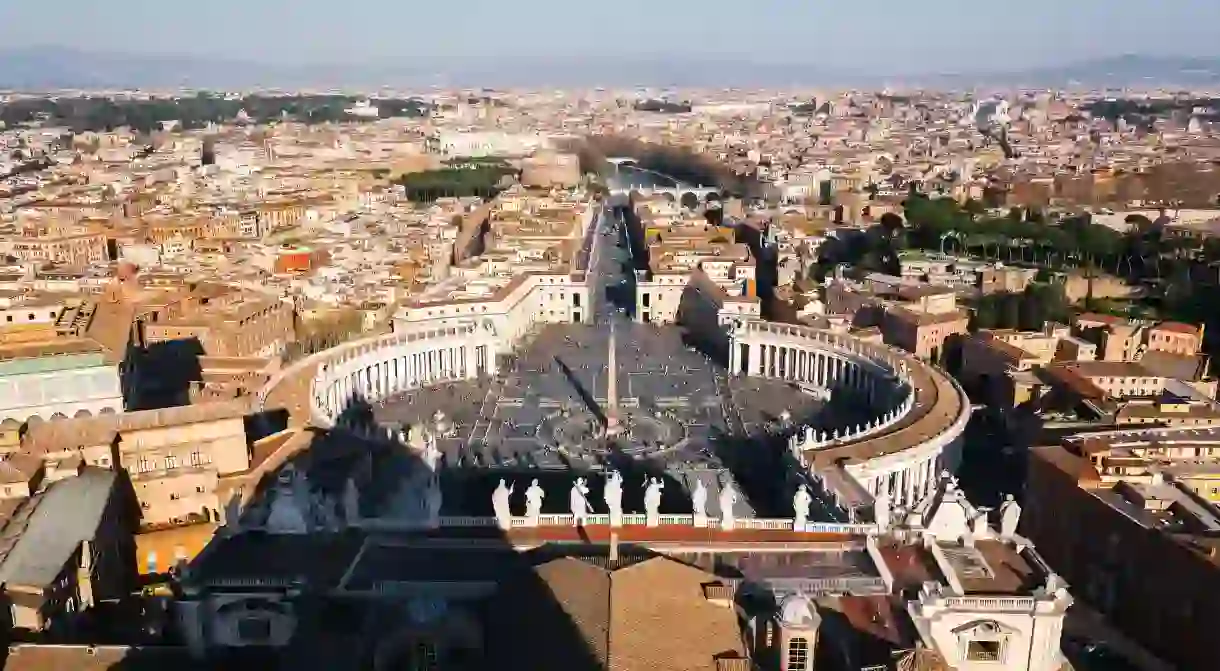10 Masterpieces in Italy's Vatican City You Need To See

Vatican City is one of the two independent states that are present in Italy. Besides containing the official site of the Pope and the Catholic Church, the so-called Holy See, it also boasts some of the most jaw-droppingly beautiful buildings and artworks in the world. Here are some of the top choices while touring the grounds.
The Sistine Chapel
Church

Raphael's 'Transfiguration'
Art Gallery
This beautiful painting is the culmination of Raphael’s artistic career and is displayed in the Pinacoteca Vaticana in Vatican City. It was commissioned by Cardinal Giulio di Giuliano de’ Medici and the renowned High Renaissance artist worked on it from 1516 to 1520, the year of his death. ‘Transfiguration’ illustrates one of Jesus’ miracles in the Bible: his transfiguration into radiant light on a mountain. In Raphael’s version, the lower part of the painting depicts another episode from the Gospel, while the masterful use of chiaroscuro imparts a solemn, tragic quality that’s masterful at every turn.
St Peter's Square
Architectural Landmark

St Peter’s Square is usually regarded by tourists as the place where they have to wait in line in order to access the Basilica, but it is actually a piece of art in its own right. Designed and built by Bernini between 1656 and 1667, it is enclosed by two colonnades which create a circular space in the middle. This peculiar shape is unique and stands for the open arms of the Church, which are extended to both the Catholic and the non-Christian community as a gesture of warm-hearted acceptance: Definitely something to look at in detail when waiting to enter the Basilica!
Caravaggio's 'The Entombment of Christ'
Art Gallery
Raphael's 'The School of Athens'
Museum
Leonardo's 'St Jerome in the Wilderness'
Museum
'Belvedere Torso'
Art Gallery
This fragment of a statue may remain unnoticed during a visit to the Vatican Museums, but Renaissance artists such as Michelangelo were particularly fond of it. What inspired these 16th- and 17th-century artists most was the twisted, convoluted quality of the statue. Therefore, ‘Belvedere Torso’ illustrates how the ancient world shaped pre-modern art and sculpture in surprising ways, and it highlights the latter’s indebtedness to the former. The marble sculpture itself dates back to the 1st century BC and is thought to be a copy of a previous original.
'Laocoön and His Sons'
Art Gallery
This sculpture counts as one of the finest examples of ancient Greek art. It portrays Laocoön and his sons being killed by sea-serpents, which were sent by Athena and Poseidon in order to favour the defeat of Troy and the ensuing foundation of Rome. Probably dating back to around 30-40 BC, this group of figures is displayed in an open courtyard in the Vatican Museums and is definitely worth the detour from the usual route.
St Peter's Basilica
Architectural Landmark

Raphael's 'The Annunciation'
Art Gallery
‘The Annunciation’ used to be part of a series of paintings by Raphael for the Oddi family chapel in Perugia, but is now displayed in the Vatican Pinacoteca. As the title suggests, it portrays the moment in which the angel Gabriel announces the Incarnation of Christ to the Virgin Mary. What is stunning about this artwork is the perspective and symmetry of the backdrop against which the two figures emerge, below the fatherly look of God in the sky. The pillars and the clever use of perspective make the scene three-dimensional in a truly Renaissance way.
Trips and Tours in Italy
Architectural Landmark

Planning your vacation in Italy? Whether you’re a culture vulture or an outdoor enthusiast – or a bit of both! – our amazing collection of multi-day tours in Italy is sure to include your dream itinerary.













